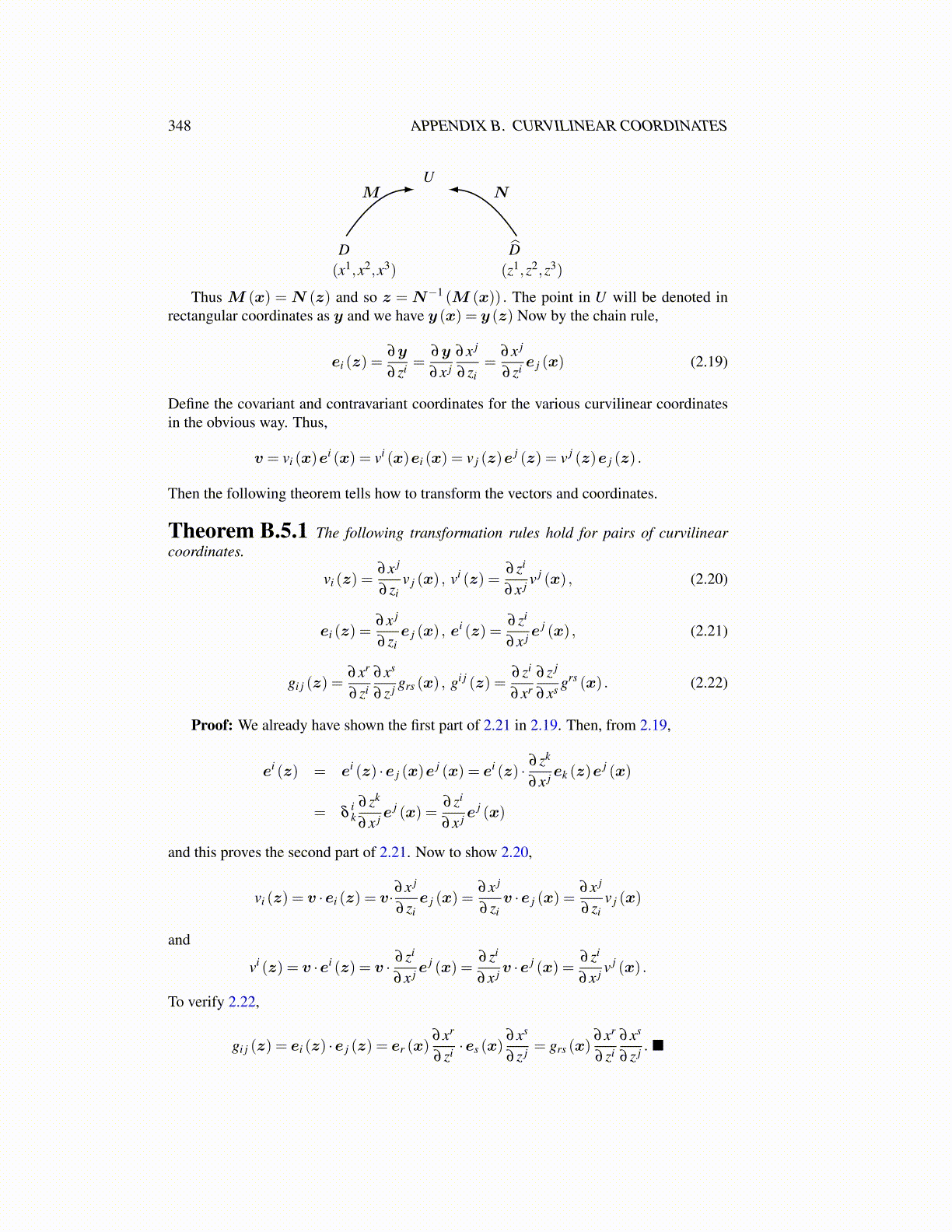
348 APPENDIX B. CURVILINEAR COORDINATES
U
D D̂
M N
(x1,x2,x3) (z1,z2,z3)
Thus M (x) = N (z) and so z = N−1 (M (x)) . The point in U will be denoted inrectangular coordinates as y and we have y (x) = y (z) Now by the chain rule,
ei (z) =∂y
∂ zi =∂y
∂x j∂x j
∂ zi=
∂x j
∂ zi e j (x) (2.19)
Define the covariant and contravariant coordinates for the various curvilinear coordinatesin the obvious way. Thus,
v = vi (x)ei (x) = vi (x)ei (x) = v j (z)e
j (z) = v j (z)e j (z) .
Then the following theorem tells how to transform the vectors and coordinates.
Theorem B.5.1 The following transformation rules hold for pairs of curvilinearcoordinates.
vi (z) =∂x j
∂ ziv j (x) , vi (z) =
∂ zi
∂x j v j (x) , (2.20)
ei (z) =∂x j
∂ zie j (x) , e
i (z) =∂ zi
∂x j ej (x) , (2.21)
gi j (z) =∂xr
∂ zi∂xs
∂ z j grs (x) , gi j (z) =∂ zi
∂xr∂ z j
∂xs grs (x) . (2.22)
Proof: We already have shown the first part of 2.21 in 2.19. Then, from 2.19,
ei (z) = ei (z) ·e j (x)ej (x) = ei (z) · ∂ zk
∂x j ek (z)ej (x)
= δik
∂ zk
∂x j ej (x) =
∂ zi
∂x j ej (x)
and this proves the second part of 2.21. Now to show 2.20,
vi (z) = v ·ei (z) = v·∂x j
∂ zie j (x) =
∂x j
∂ ziv ·e j (x) =
∂x j
∂ ziv j (x)
and
vi (z) = v ·ei (z) = v · ∂ zi
∂x j ej (x) =
∂ zi
∂x j v ·ej (x) =
∂ zi
∂x j v j (x) .
To verify 2.22,
gi j (z) = ei (z) ·e j (z) = er (x)∂xr
∂ zi ·es (x)∂xs
∂ z j = grs (x)∂xr
∂ zi∂xs
∂ z j . ■